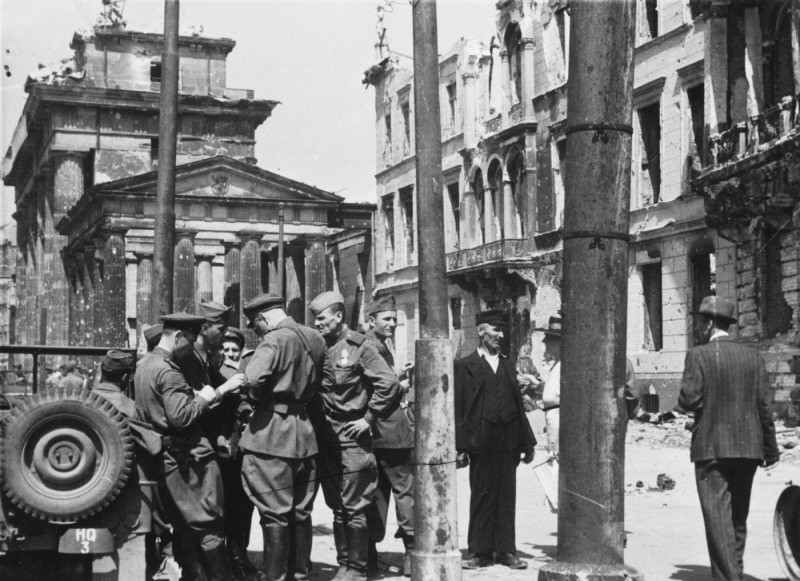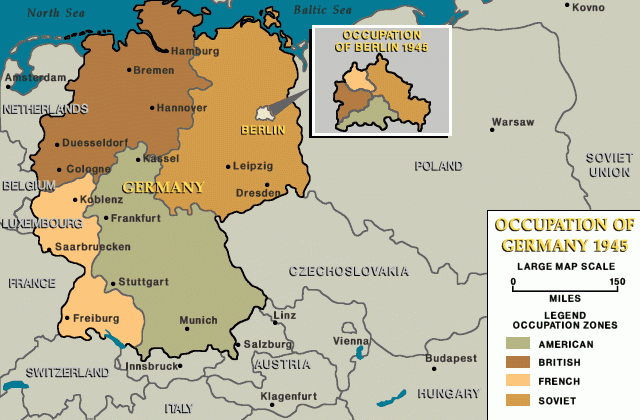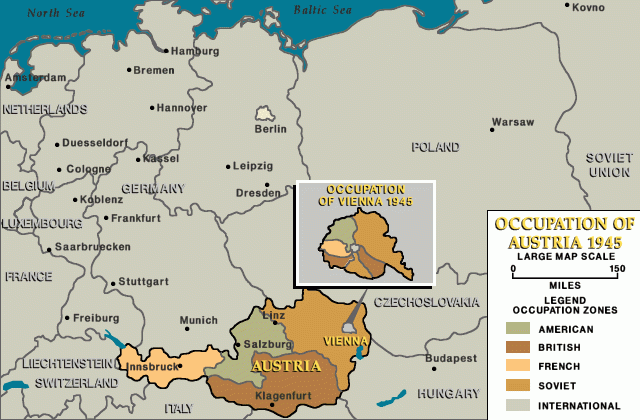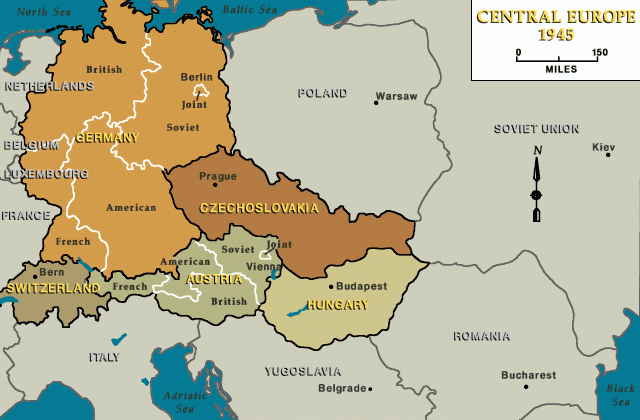
The Soviet Union and Europe after 1945
Allied Occupation of Germany and Austria
Continental Europe emerged from German domination in 1945, shattered and transformed. After the German surrender, Great Britain, the United States, France, and the Soviet Union divided Germany and Austria into four occupation zones, each to be administered by one of the victorious powers. The cities of Berlin and Vienna were similarly divided and occupied.



Soviet Annexations
With the acquiescence of the western allies, the Soviets re-annexed eastern Poland, Bessarabia, and northern Bukovina. Though the Soviet Union also annexed the Baltic states, those annexations were never recognized by Britain or the United States. Poland annexed Pomerania, Silesia, and southern East Prussia; the new German-Polish border lay along the line of the Oder and Neisse Rivers. The Soviets attached northern East Prussia with the city of Koenigsberg to the Russian SSR (Soviet Socialist Republic). As a provision of the Treaty of Friendship signed between the Soviet Union and the restored state of Czechoslovakia, the Soviet Union annexed interwar Czechoslovakia's easternmost province, Transcarpathian Rus.
Soviet authorities were determined to establish regimes in eastern Europe that were friendly or subservient to the Soviet Union. Even before the Germans surrendered, Soviet occupation troops assisted local Communists in installing Communist dictatorships in Romania and Bulgaria. Indigenous Communist movements established dictatorships in Yugoslavia and Albania in 1945. In 1949, the Soviet Union established the Communist German Democratic Republic in its occupation zone of Germany, as the western allies promoted a German Federal Republic in the western zones.

